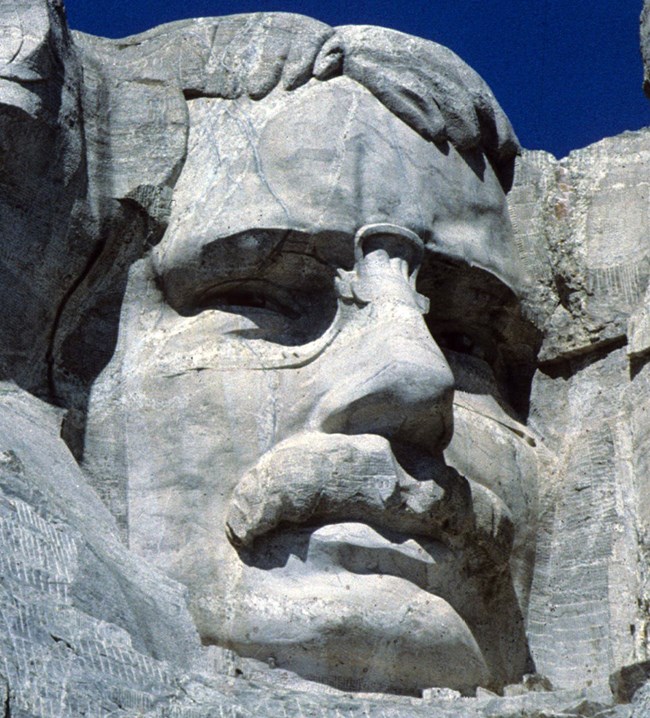NOVEMBER 19, 2019 – Perhaps you’ve read Theodore Rex by Edmund Morris, acclaimed biography of one of our “greatest” presidents, “greatest” defined as “face chiseled in granite.” Or, as I did last weekend, maybe you’ve watched Ken Burns’ documentary, The Roosevelts. At least you’ve heard of Teddy Roosevelt and even seen his likeness chiseled out of Mt. Rushmore.
I’d encountered lots of “Teddy” in books and gotten a full dose of him in Candice Millard’s The River of Doubt. That book described his disastrous adventure into the Amazon, a trip that nearly killed him—as had so many other escapades.
Against the backdrop of the 2020 presidential campaign, I find Teddy Roosevelt a particularly fascinating character-president, like none other, except the guy who earned a five-volume biography by the likes of Robert Caro—none other than LBJ.
Theodore Roosevelt, the 26th president, was immensely, heroically popular in his day. He had much to offer, and he knew expertly how to leverage it with reporters. But with the perspective afforded by the century since his death at 60, we can disparage him as easily as we can admire him.
He was the first president to invite an African American—Booker T. Washington—to dine at the White House. Roosevelt did this wholly on his own initiative, early in his administration. He took enormous political flak for doing so. Yet, he is also the man who on scant evidence ordered the dishonorable discharge of an entire, all-black regiment after the Brownsville Affair, in which soldiers had been (wrongly) accused of murder. By current standards, Roosevelt had some grating things to say about the “inferiority” of black people.
Roosevelt was an ardent naturalist and conservationist—who killed a ridiculous number of now endangered animals.
He was a trust-busting progressive, yet was also an incorrigible imperialist of an order unimaginable today.
A brilliant man of books and letters, a true intellectual, Roosevelt was also a tough-guy/cowboy/rancher . . . and soldier leading his Rough Riders up San Juan Hill through a hail of bullets.
An incessant talker and inveterate do-er, Roosevelt could out-wit, out-ride, out-yak, out-do any guest, friend or foe. He died in his sleep, and it was said that that was the only way he could’ve gone, because if he’d been awake for the event, death would have taken a terrible thrashing.
With his inexhaustible energy, Teddy exhausted everyone around him. He drove people crazy. Some with whom he battled called him crazy. On a certain level he was. His hyper-energy was in reaction to his childhood infirmities and later personal tragedies. To know the man, you have to understand his demons . . . and his supports: a loving family and the substance and accoutrements of privilege.
It’s hard to imagine who of today’s world could equal the drive, the force, the vision of a Teddy Roosevelt. Yet in the final analysis, does his image belong in the company of Washington, Jefferson, and Lincoln on the face of Mt. Rushmore?
Then again, does any mortal’s mug deserve immortality on a mountain’s face?
(Remember to subscribe to this blog and receive notifications of new posts by email.)
© 2019 Eric Nilsson
